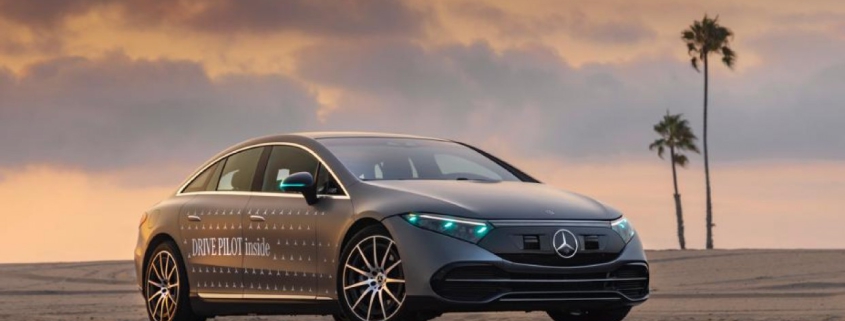A new identification color for autonomous Mercedes-Benz vehicles
One of the first things we learn as new drivers is the color palette of the road. Green means “go”, yellow serves as a warning or to slow down, while red means “stop”. Today, for the first time in decades, a new color is being added to the list. It is turquoise, which will belong to cars operating without the intervention of their driver.
This color has been reserved as part of the permits issued by the states of California and Nevada to Mercedes-Benz for its revolutionary Level 3 SAE automated driving system, Drive Pilot. Mercedes has stated that there are no national or international standards for signaling computer-driven cars, which requires regulatory authorities to find a distinct color to signal authorized vehicles. This will prevent incidents where the public or police may freak out upon seeing an S-Class driver watching a video without touching the steering wheel.
Turquoise was chosen for multiple reasons: it is visible and distinct, unlike purple, and it is not already associated with any other signal. The primary colors red, yellow, and blue are already in use, as well as the composite colors green and orange. The fact that turquoise has already been recommended by the SAE is significant, as is the fact that this color is already associated with the authorized manufacturer’s Formula 1 team.
Under the operating permit, Mercedes’ Drive Pilot can activate turquoise lights incorporated into its headlights, taillights, and side mirrors. However, the use of this technology is limited to highways and is only permitted in California for two years. In Nevada, on the other hand, authorization is unlimited and will begin with the EQS and S-Class sedans in 2026.
Of course, the technology is already on the road, it just doesn’t need to announce what it’s doing. This framework does not seem to aim at forcing automakers to equip their vehicles with turquoise lights, but rather to give them the option to do so. Given the advantages it offers, it is hard to imagine other companies not adopting it as a standard, that is, when they can deploy equivalent technology.



